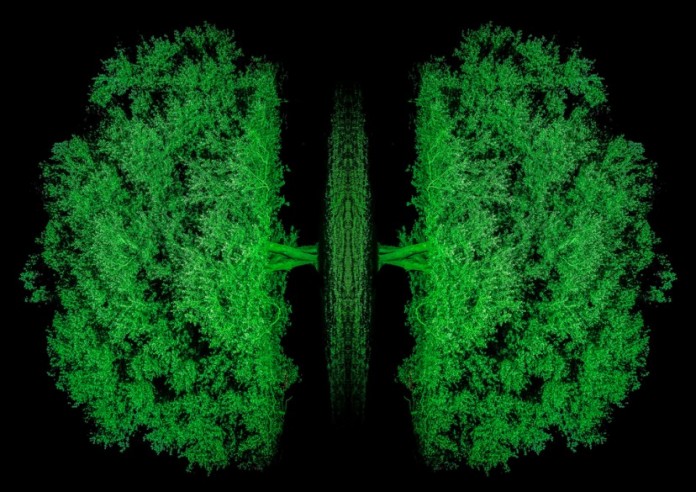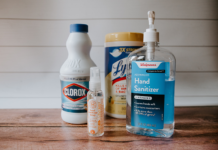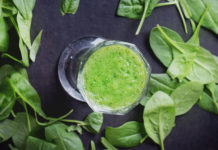For most people, summer is a time to enjoy the outdoors: the warm weather, spending time around campfires with family and friends, hiking, and having fun at the park. Unfortunately, those are just a handful of activities that can also cause quite a bit of discomfort to people who suffer from COPD (chronic obstructive pulmonary disease).
COPD is a disease that can make the simple involuntary act of breathing very difficult. Certain activities and triggers can cause coughing, shortness of breath, wheezing, and an overabundance of mucus – among other things. If you or someone you know suffers from COPD, here are a few things to keep in mind when planning your activities this summer.
Avoid Smoke and Pollutants
Cigarettes are not the only smoke related danger to COPD patients. Some seemingly innocent summertime by-standers that may trigger a flare include campfires as well as smoke from a grill.
Even just spending excessive time outdoors can be enough to exacerbate symptoms as COPD patients are very susceptible to the irritants in pollutants caused by car exhaust, smog, industry, etc. Just remember that smoke of any kind is a pollutant, and exposure should be kept to an absolute minimum.
Keep Tabs on Mold and Pollen Counts
People are naturally drawn to nature in the summertime. Walking or biking park trails and taking nature hikes are popular summertime activities. Unfortunately, they’re not always wise choices for patients who suffer from COPD.
High mold and pollen counts can irritate the symptoms in people who suffer from any sort of breathing condition including asthma, emphysema, and COPD. Says Gina Kaurich, executive director of FirstLight Homecare, “People should be very cognizant of their environment and how their breathing is affected.” She advises that it’s best to curtail activity as soon as symptoms arise; no matter how minor, and emphasizes that it’s very important to check mold and pollen counts prior to going outside.
Stay Inside on Humid Days
Aside from pollutants, humidity is the natural occurrence of moisture in the air, and it can also be a key trigger of COPD flares. The Lung Institute recommends that COPD patients remain inside air-conditioned buildings on days when heat and humidity are very high; especially when smog, mold, and pollen counts are also extreme. Those with COPD should always stay well hydrated and even avoid riding in hot cars.
Avoid Thunderstorms
Most people don’t immediately associate thunderstorms with difficulty breathing. But researchers have established a link between thunderstorms and the agitation of symptoms in people with breathing diseases such as COPD and asthma. The study was conducted on patients who lived in Atlanta, Georgia. Although researchers have not yet been able to definitively determine the link, they did observe a marked increase in emergency room visits for people with breathing issues during thunderstorms.
Keep Your Home Clean
It’s easy to allow oneself to become more lenient about housework during the summer when there are so many other tempting activities. But it’s important for patients who suffer from COPD to keep their homes as free of dust and other lung irritants as possible.
Ensure that air conditioning filters are changed regularly. Be sure to frequently dust the tops of cabinets and sweep under furniture. Also avoid chemicals that may contain irritants. The COPD Foundation recommends keeping your home well ventilated and free of pet hair. It also recommends removing any unnecessary clutter from your home.
Cook Less
Summer is the perfect time of year to turn off your stove and enjoy eating healthier raw or cold meals. Gazpachos, salads, and cerviches are just a few popular summer meals that can keep COPD patients away from the stove.
The World Health organization warns that cooking, particularly in poorly ventilated areas with appliances that utilize fuel such as gas, can be a trigger for COPD.
Also, wood and charcoal fires can exacerbate COPD and asthma so be careful to limit your exposure when grilling with charcoal, as well as spending too much time around the bonfire.
Maintain a Healthy Diet
Ice cream and hot dogs are popular foods associated with summer fun in the park or backyard barbecues. But maintaining a healthy diet is important for COPD patients to maximize their health and impede the advancement of the condition. Experts recommend eating a diet high in lean proteins and healthy fats.
According to Christine Gerbstadt, an MD and spokesperson for the American Dietetic Association, the majority of people fail to realize that breathing burns a lot of calories. She recommends those with COPD actually up their calorie intake to avoid extreme weight loss, which is one of the biggest factors in the rapid deterioration in COPD patients. Vitamin supplements, such as Diamond Nutritionals Foundation Vitamins, are also recommended.
For my patients with COPD, I have used N-Acetyl Cysteine for years with good success.
NAC is a mucolytic, and works very well to break up congestion in the chest. It is also
an antioxidant, and boosts the production of glutatione in the body. I have found that glutathione helps my COPD and asthma patients breathe easier.
Avoid Pets that Shed
Pets make great companions, but they’re not always a friendly complement to patients with COPD. The American Lung Association says pet dander can be the primary cause of symptoms in patients with breathing problems and prolonged exposure can actually lead to the deterioration of the lungs.
Cats are typically the most likely to produce the most dander, though many breeds of dogs also produce high amounts… as does just about any pet with fur! The Association also warns that although there are pets advertised as “hypoallergenic,” there is no such thing as a furry friend 100% free of dander, though the amount produced by these breeds might be significantly less. So proceed with caution.
Living with COPD can be a tricky prospect, particularly during seasons like summer when so much of what is associated with the season can trigger symptom flares. But with a few precautions, it’s possible to enjoy the season while keeping symptoms at a minimum.
—
Photo credit: Simon & His Camera / CC BY-ND 2.0








